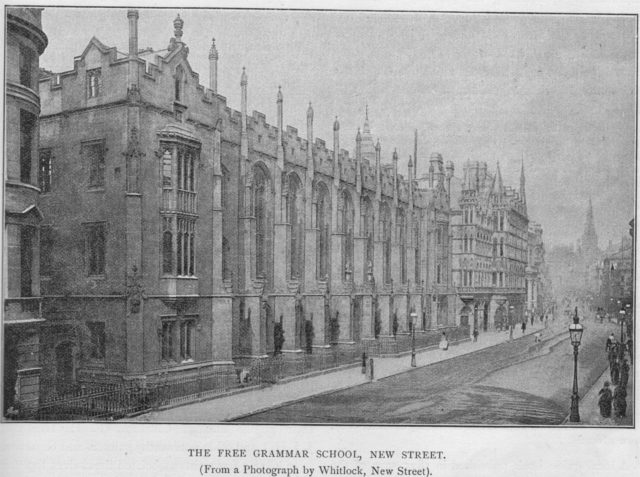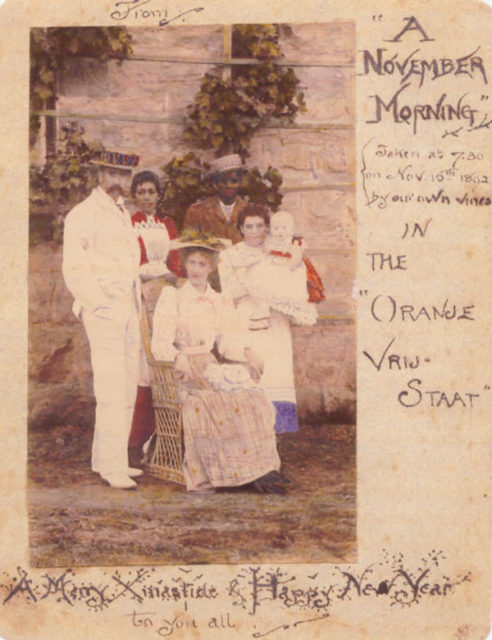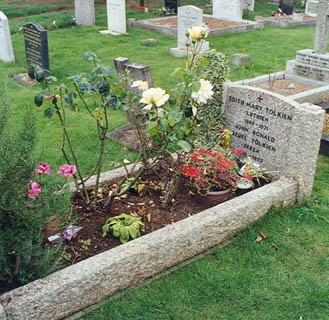The Hobbit and its sequel, The Lord of the Rings, tell the story of Middle-earth and its inhabitants of hobbits, elves, dwarves, and wizards. It was written by John Ronald Reuel Tolkien, a professor of Old English at Oxford University, also commonly known as J. R. R. Tolkien. Middle-earth was a fantasy land that existed only in Tolkien’s mind, but some stories were based on his personal life. Beren and Lúthien, whose story is told sporadically throughout The Silmarillion, mirrors the love story of J. R. R. and his wife, Edith.
Tolkien wrote the tales of Middle-earth soon after returning from France after fighting in World War I. He had lost many close friends in the war and was suffering from a reoccurring typhus infection he caught in the trenches of the Somme Offensive. Some experts believe that writing was his own type of therapy for dealing with his losses.
Born in 1892, Tolkien lost both parents at an early age and was raised by an aunt, a Catholic priest, and a woman called Mrs. Faulkner, who owned a boarding house. He showed promise as a linguist, learning foreign languages and even inventing his own language. He attended King Edward’s School and Oxford before the war, returning to Oxford as a professor afterward.

It was at Mrs. Faulkner’s boarding house that the 16-year-old Tolkien met Edith Bratt, who was 19 at the time. Their relationship was becoming serious when Father Francis forbade him to court Edith until he was 21. Following Father Francis’ orders, Tolkien immersed himself in his studies until 1913, when he and Edith renewed their relationship, eventually marrying in 1916. The couple had four children: three boys, and one girl.
Tolkien began writing letters to the children at Christmas time, signing them as Father Christmas, most of which were gathered and published as The Father Christmas Letters in 1976. He also told the children stories entitled Mr. Bliss and Roverandom, which were published after his death, as well as stories about a magical world with wizards and dragons. This well-known story later became The Hobbit.

The Hobbit was published in 1937 and became an instant success. When asked by his publishers for more stories of Middle-earth, Tolkien produced The Silmarillion, a compilation of Middle-earth stories that took place much earlier than The Hobbit. It contains The Silmarillion and two short stories, The Ainulindale and the Valaquenta, which are associated with The Silmarillion. Two other stories, Akallabeth and Of the Rings of Power, are independent works, according to Christopher Tolkien, the author’s son and caretaker of his extensive unpublished works.
In the foreword of The Silmarillion (pp. xiii), Christopher Tolkien states that his father wrote the Akallabeth and Of the Rings of Power to be “separate and independent,” to be included as another period in Middle-earth. Although it was not accepted by the publisher, Tolkien used the writings as a basis for most of his work and very rarely made any changes. Although Tolkien was disappointed in the lack of commercial viability of The Silmarillion, he set about creating the famous trilogy The Lord of the Rings. The publisher, Allen & Unwin, was sure the books would fail. Not only were the works a success, but Tolkien’s financial and literary status was greatly improved.

After the death of Tolkien in 1973, his son Christopher took it upon himself to edit and publish The Silmarillion in 1977. In 1980, he published a group of his father’s unfinished works, Unfinished Tales of Númenor and Middle-earth.
In The Silmarillion, a tale of a mortal man, Beren, and an immortal elf, Lúthien, tells of their quest to retrieve the Silmaril, a powerful jewel from the crown of Morgoth, the evilest being of Middle-earth. If the stone is presented to her father, the Elven King will allow them to marry.

The story tells of their enduring love that keeps them together through all the difficulties of their mission. Christopher Tolkien has taken that story and published it as a separate tale over 100 years after his father had originally written it in The Silmarillion.
Read another story from us: The life story of J. R. R. Tolkien will be told in not one but two films
An important scene in the book features the re-creation of the time Edith danced for him in a field of white flowers in East Yorkshire, mirroring the deep love of Tolkien (Beren) and Edith (Lúthien).
The book was published by HarperCollins and went on sale in June of 2017.
